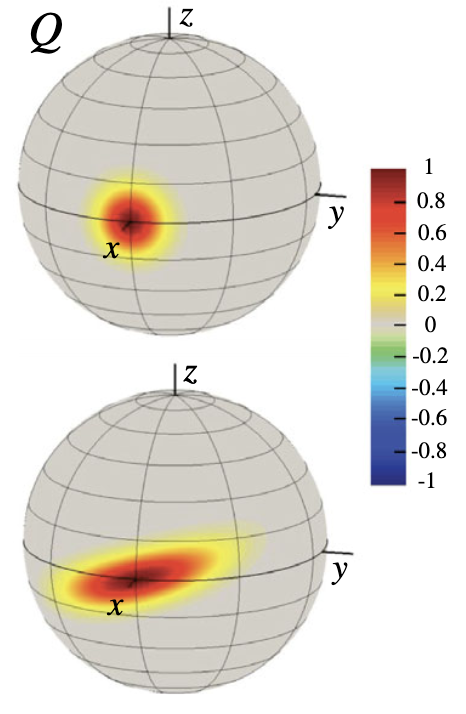


Measurements of classical states of $N$ particles are inherently sensitivity-limited by the Standard Quantum Limit (SQL)/ Shot Noise Limit: $\frac{1}{\sqrt{N}}$. Utilising non-classical states allows for improved sensitivity beyond this limit and can theoretically approach the Heisenberg Limit of $\frac{1}{N}$. One possible method to generate such non-classical states is to reduce the variance of one degree of measurement at the expense of increasing the variance of another one. These processes are referred to as squeezing [1].
In advanced light interferometers such as LIGO [2] and Virgo [3], squeezing schemes have been instrumental at pushing the fundamental limits of sensitivity and led to the first detection of gravitational waves. Similar effective squeezing in atom interferometers however is still limited, mainly due to the more complex generation, particle losses, inter-particle interactions, etc.
The Quantera Squeezing-Enhanced Inertial Sensing (SQUEIS) project aims to establish new frontiers in atom interferometry by devising and applying quantum-enhancement techniques based on squeezing to state-of-the-art applications in gravimetry, gradiometry and inertial sensing.
One objective of this project is to come up with a recipe of a freely falling Bragg or Raman interferometers with one-axis-twisted input states [5]. Due to the multi-mode nature of the Bragg diffraction used for the mirror and beamsplitter operations, one has multiple ports for every operation leading to multiple paths in the interferometer itself [6]. The challenge is to further enhance the sensitivity of the interferometer despite its losses. An active collaboration with the group of Prof. Klemens Hammerer is taking place here.



In contrast to freely falling setups, where the separation time T of the interferometer is limited by the atoms free fall, alternative schemes can be proposed using trapped atoms. Here the atoms are levitated against gravity by a constant trapping potential. A full atom interferometer can be realised entirely with these potentials or in a hybrid guided interferometer where the beam-splitters are still laser beams [8].
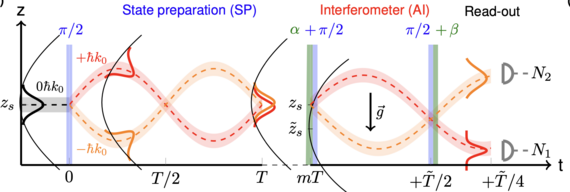
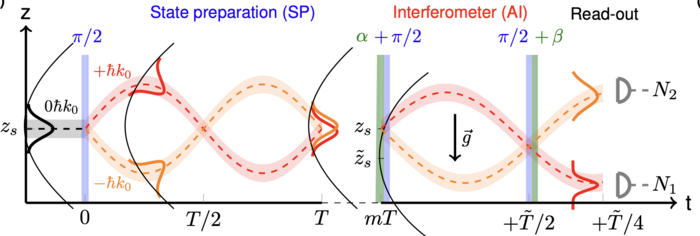
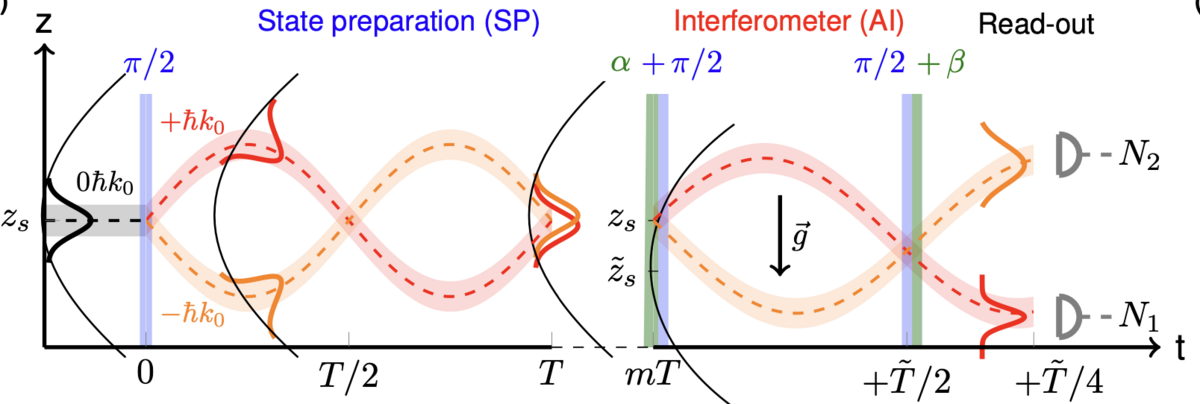
Trapped setups lead to detrimentally large atom-atom interactions. These interactions however can be tuned experimentally using Feshbach Resonances, by tuning external magnetic fields. Such precise control over interactions also allows for implementation of squeezing schemes within this guided interferometer and leads to our analytic and numerical research of the viability of one-axis-twisted squeezing for sensitivity gain in such setups.
References
[1] Squeezed spin states, Masahiro Kitagawa and Masahito Ueda, Phys. Rev. A 47, 5138 – Published 1 June 1993, https://doi.org/10.1103/PhysRevA.47.5138
[2] LIGO https://www.ligo.caltech.edu/
[3] Virgo, https://www.virgo-gw.eu/
[4] Quantum metrology with nonclassical states of atomic ensembles, Luca Pezzè, Augusto Smerzi, Markus K. Oberthaler, Roman Schmied, and Philipp Treutlein, Rev. Mod. Phys. 90, 035005 – Published 5 September 2018, https://doi.org/10.1103/RevModPhys.90.035005
[5] High-Precision Quantum-Enhanced Gravimetry with a Bose-Einstein Condensate, ****Stuart S. Szigeti, Samuel P. Nolan, John D. Close, and Simon A. Haine, Phys. Rev. Lett. 125, 100402 – Published 3 September 2020, https://link.aps.org/doi/10.1103/PhysRevLett.125.100402
[6] Analytic theory for Bragg atom interferometry based on the adiabatic theorem, Jan-Niclas Siemß, Florian Fitzek, Sven Abend, Ernst M. Rasel, Naceur Gaaloul, and Klemens Hammerer, Phys. Rev. A 102, 033709 – Published 10 September 2020, ****https://doi.org/10.1103/PhysRevA.102.033709
[7] Delta-Kick Squeezing, Robin Corgier, Naceur Gaaloul, Augusto Smerzi, and Luca Pezzè, Phys. Rev. Lett. 127, 183401 – Published 29 October 2021 https://doi.org/10.1103/PhysRevLett.127.183401
[8] Nonlinear Bragg interferometer with a trapped Bose-Einstein condensate**,** Robin Corgier, Luca Pezzè, and Augusto Smerzi, Phys. Rev. A 103, L061301 – Published 9 June 2021, https://doi.org/10.1103/PhysRevA.103.L061301
Funding
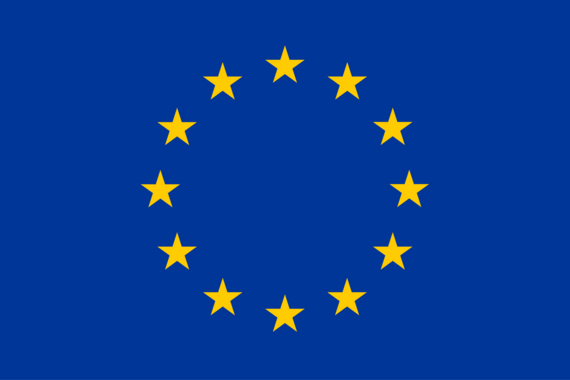
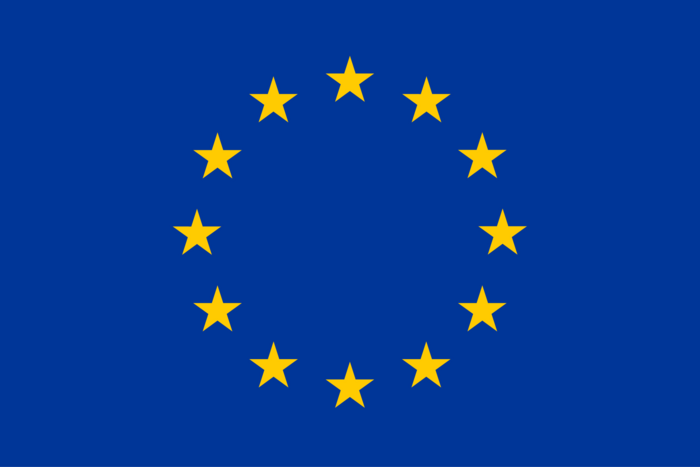
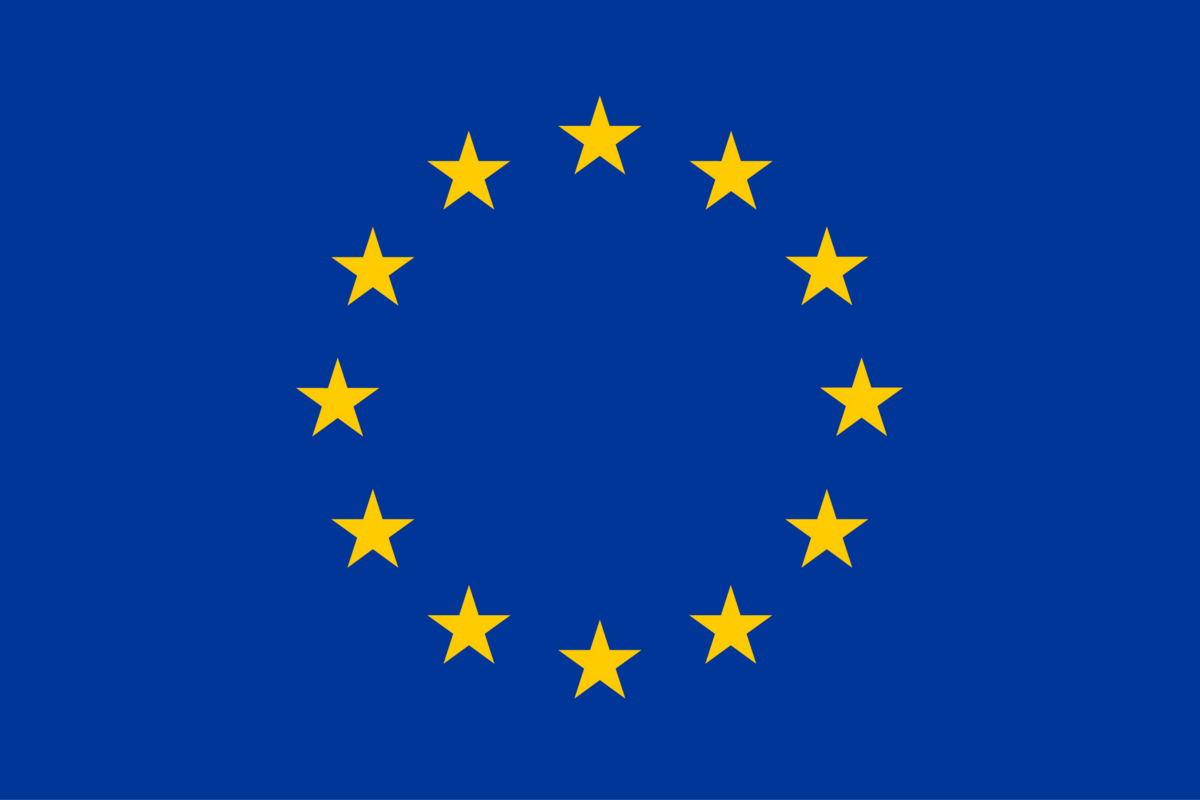
This project has received funding from the European Union's Horizon 2020 Research and Innovation Programme under Grant Agreement no. 731473 and 101017733 through DFG project no. 499225223.





